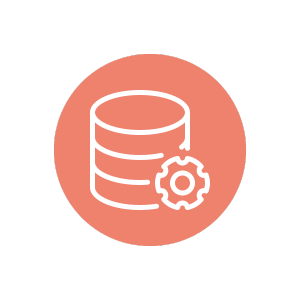Introduction to PIM
Today small, medium, and large enterprises are all looking for one unified platform to manage their product information so that they can provide the most up-to-date and accurate information to their customers at all times. Managing this product’s information efficiently can be a daunting task – that’s where the product information management (PIM) solution comes into play.
Key Takeaways
- Product Information Management (PIM) systems provide businesses with a centralized platform to manage and distribute detailed product data across various channels.
- A PIM solution streamlines the process of collecting, enriching, and sharing accurate product information, ensuring consistency across e-commerce platforms, marketplaces, and marketing materials.
- By using PIM, businesses can improve data quality, enhance customer experience, reduce time-to-market, and efficiently handle large volumes of product data, making it a crucial tool for companies looking to optimize their product data management.
What is PIM?
A PIM is a unified platform that is designed to help businesses centralize, organize, and enrich product information.
The 10 core aspects of a PIM solution
Here are the 10 core aspects of the PIM solution:
- Centralized data hub
- Product usage information
- Technical information
- Digital asset management (DAM)
- Emotional information
- Marketing information
- Sales information
- Localized information
- Taxonomy
- Design Information

1. Centralized Data Hub
A centralized data hub is an essential component of product information management (PIM). It serves as a single source of truth for all product-related information, making it easier for businesses to manage and maintain consistent data across different channels and touchpoints. By having a centralized data hub, companies can avoid duplicated efforts and confusion that can arise from working with multiple systems or spreadsheets. With PIM, updates and changes made to product information are instantly reflected across all channels, ensuring accuracy and reducing the risk of discrepancies. This centralized approach enables businesses to streamline their processes, save time, and improve overall efficiency.
2. Product Usage Information
Providing detailed product usage information is crucial for businesses to help their customers understand how to effectively use their products. PIM allows companies to include instructions, guidelines, safety information, and other relevant data that can assist consumers in making the most out of their purchases. By having this information readily available, businesses can enhance the customer experience, reduce support inquiries, and minimize user frustrations. Whether it’s assembling furniture, operating electronic devices, or using complex software, having comprehensive product usage information readily accessible can make a significant difference in customer satisfaction and loyalty.


3. Technical Information
Accurate technical information is a vital aspect of product information management. PIM enables businesses to store and manage all the technical details and specifications related to their products in an organized manner. From dimensions and weights to material composition and manufacturing processes, having this information easily accessible is crucial for customers evaluating products and making purchasing decisions. With PIM, businesses can ensure that accurate and up-to-date technical information is available across all channels and platforms, helping customers make informed choices while reducing returns or dissatisfaction due to incorrect or incomplete product details.
4. Digital Asset Management (DAM)
In today’s visually driven marketplace, effective management of digital assets is essential for businesses. PIM solutions allow companies to organize and manage their digital assets such as product images, videos, 3D models, and other multimedia content systematically. This ensures that the right assets are associated with the correct products, making it easier to visually showcase products on websites, mobile applications, or in marketing campaigns. PIM also enables businesses to maintain a consistent brand image by ensuring that all digital assets adhere to company guidelines and are of high quality. By efficiently managing digital assets, businesses can captivate and engage customers, ultimately driving higher conversion rates and improved customer satisfaction.


5. Emotional Information
While product features and specifications are crucial, emotional information plays a significant role in the purchasing decisions of customers. PIM allows businesses to include emotional or evocative information about their products, such as storytelling narratives, brand values, or customer testimonials. This type of information helps create a connection between the product and potential buyers on a personal and emotional level. By appealing to customers’ emotions, businesses can differentiate themselves in a competitive market and establish a deeper brand-consumer relationship. With PIM, companies have the flexibility to include persuasive content that goes beyond features and benefits, ultimately influencing customers’ purchasing decisions positively.
6. Marketing Information
Effective marketing relies on consistent and accurate product information. PIM serves as a valuable tool for organizing marketing-related information associated with products, such as product descriptions, promotional data, and marketing collateral. By storing this information within a centralized PIM system, businesses can ensure that all marketing content is aligned with the overall brand strategy. PIM also enables easy updating and distribution of marketing information across various platforms and channels, ensuring that consistent and compelling messages are conveyed to customers. With PIM, businesses can streamline their marketing efforts and deliver impactful campaigns that drive brand awareness and product visibility.


7. Sales Information
Integrating sales information into the PIM system allows businesses to track and manage product sales performance, pricing details, and inventory levels. PIM provides a comprehensive view of sales-related information, enabling companies to monitor product popularity, identify trends, and make data-driven decisions. By tracking sales data within the PIM system, businesses gain insights into which products are performing well and can adjust pricing strategies accordingly. Additionally, businesses can ensure accurate and up-to-date product availability information, improving customer satisfaction and reducing the risk of overselling or out-of-stock situations. The inclusion of sales information in PIM streamlines the processes of managing pricing, inventory, and sales analysis, facilitating more effective sales strategies.
8. Localized Information
For businesses operating in multiple markets and regions, PIM facilitates the management of localized product content. It allows companies to customize and localize product information, descriptions, and other relevant details to cater to the specific needs of each market. PIM helps businesses overcome language barriers and cultural nuances by providing the flexibility to translate and adapt product content appropriately. This ensures that customers in different regions receive information that is relevant and meaningful to them, improving their overall experience and increasing the chances of conversion. With PIM, businesses can efficiently manage localized information, reducing the time and effort required to cater to different markets while maintaining brand consistency.


9. Taxonomy
A well-defined taxonomy is a critical aspect of PIM. It enables businesses to categorize and classify products based on attributes such as type, category, brand, or any other relevant criteria. With a structured taxonomy, businesses can ensure that products are organized and easy to navigate for both customers and internal users. This helps improve the user experience, allowing customers to find the products they are looking for more quickly and easily. A clear taxonomy also facilitates efficient content management and improves searchability, making it easier for businesses to retrieve and update product information whenever necessary. Whether it’s for internal use or customers, a well-implemented taxonomy within PIM enhances efficiency and organization.
10. Design Information
In addition to technical and descriptive details, PIM allows businesses to store and manage design-related information for their products. This includes sketches, patterns, design inspirations, or any other creative assets associated with the product’s design process. By including such information within the PIM system, businesses can have a comprehensive view of the product’s design, from ideation to execution. This not only helps creative teams but also benefits other departments such as marketing and sales, as they gain insight into the design intent and can align their strategies accordingly. Having design information readily accessible within PIM ensures consistency in product presentation and enables more effective collaboration across different functions.

Conclusion
Product Information Management (PIM) solution helps businesses streamline their product information processes, enhance data quality, and deliver consistent and compelling product experiences to customers across various touchpoints. With the core aspects of PIM in mind, organizations can harness the power of centralized, organized, and enriched product data to drive business growth and success.
Commport PIM Solution
Frequently Asked Questions
PIM is a system that centralizes and manages all product information needed for marketing and sales. It ensures consistent, accurate, and up-to-date data across all channels.
Product Information Management is crucial for e-commerce because it ensures accurate and consistent product data across channels, enhancing customer experience, building trust, and improving operational efficiency.
Product Information Management systems integrate with ERP, CRM, CMS, e-commerce platforms, and digital asset management systems, ensuring synchronized and up-to-date product information across the organization.
Key features include a centralized data repository, data quality management, workflow management, multichannel publishing, scalability, integration capabilities, and a user-friendly interface.
Product Information Management improves customer experience by providing accurate and consistent product information, enhancing product search and navigation, reducing returns, and enabling personalized marketing.





